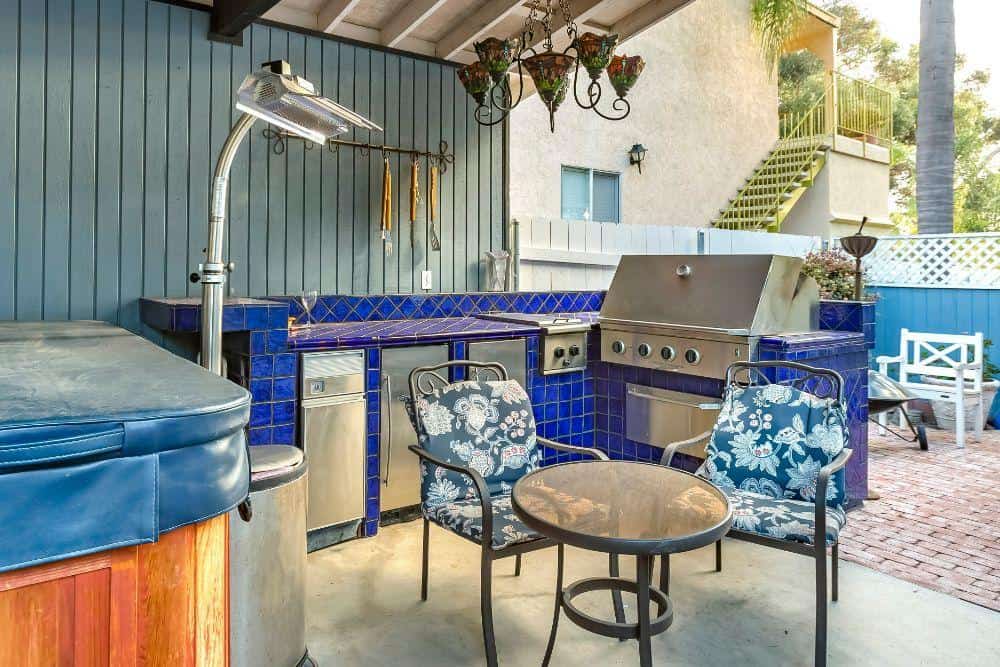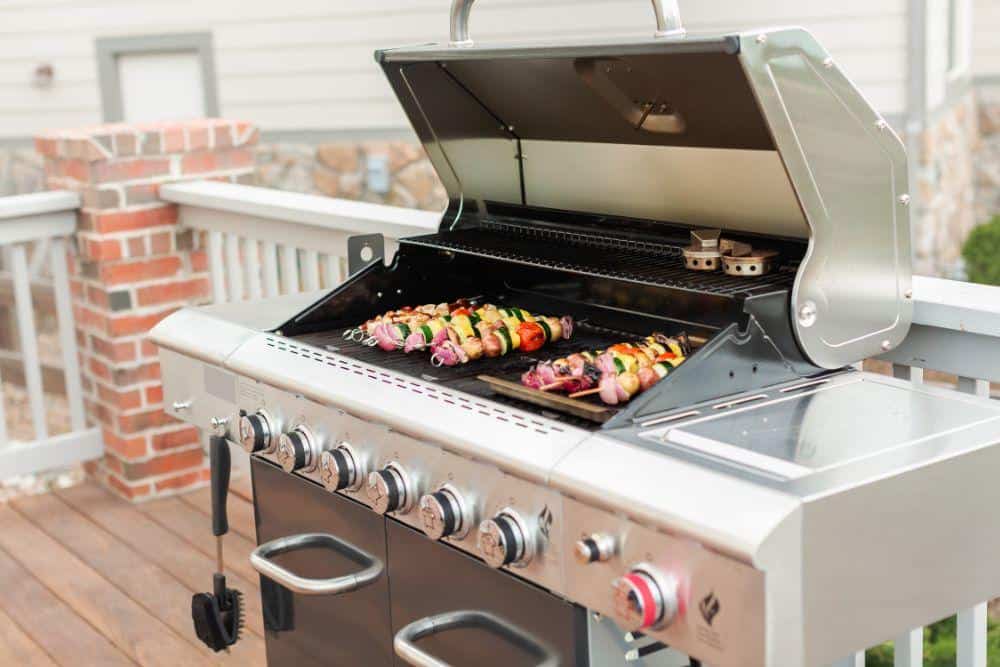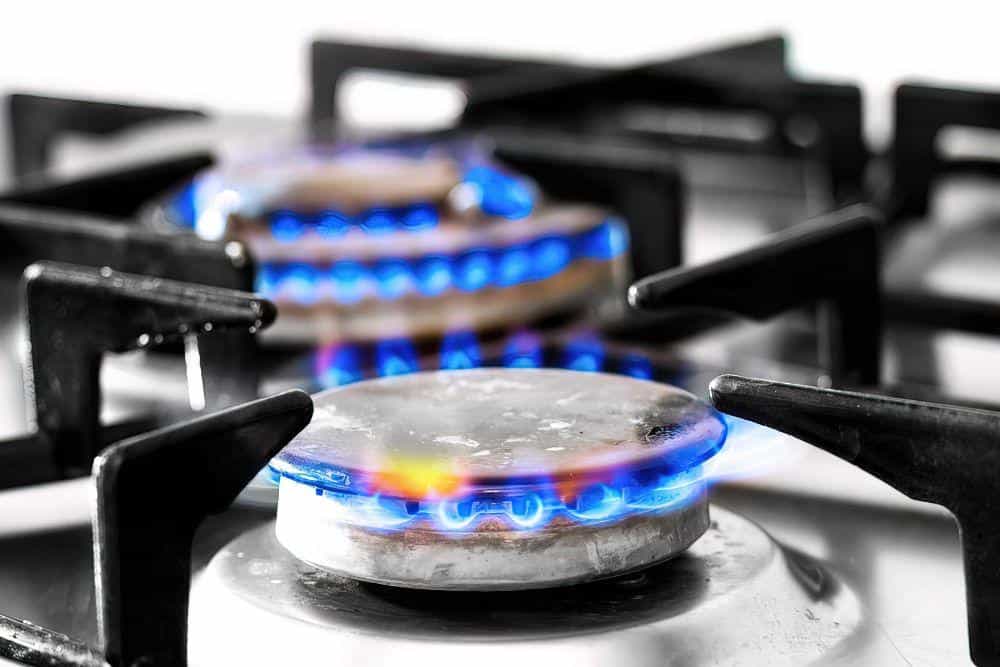Propane grills are great for producing delicious food without taking too much time. They are also handy cooking accessories because they ignite and heat up quickly, usually with just the click of a button or turn of a knob.
Given how convenient they are, people often wonder, is it OK to use a propane grill indoors? This article explores propane, grilling, and using propane grills indoors.
An Indoor grill powered by propane should not be used in the house due to the risk of carbon monoxide poisoning.
Propane is also known as liquified petroleum gas, or propane gas. It is a highly combustible gas used to power machinery of all types, including propane stoves. Propane gas is high octane, meaning it is a stable fuel that will quickly combust under pressure.
Propane is a byproduct of the processes used to produce natural gas and refine crude oil. Propane, along with butane and ethane, is removed from raw gas so that it does not condense in gas pipelines, creating a risk of volatility.
Of all energy used in the US, propane makes up 2%. Most propane is used for home heating, powering farm equipment, drying clothing, and refrigerating and cooking food.
Propane is generally stored in pressurized tanks and comes in the form of an odorless and colorless liquid. A propane tank works by releasing pressure, turning the liquid substance into vaporized gas which will ignite when a spark or flame is applied.
If a propane tank is damaged or propane spills or leaks outdoors, it is relatively safe and will not harm soil or water. Additionally, propane manufacturers usually add ethyl mercaptan to the propane mix. Ethyl mercaptan is an odorant that has an easily detectable smell. Manufacturers add ethyl mercaptan to propane tanks so that users can quickly and easily detect leaks.

Propane Grills Are Designed Strictly for Outdoor Use
There are several grill types out there, including electric grills and charcoal grills. While grills can use a variety of gas fuels, including butane and natural gas, propane is a preferable fuel for several reasons.
First, propane is compressible. Naturally, propane will change from a liquid to a gas at -46 degrees Fahrenheit. However, propane can be kept in a liquid state when compressed because it condenses in the tank.
Propane will remain liquid until released from the tank when it is uncondensed, given that this occurs at or above -46 degrees Fahrenheit (which would be the case for just about any grilling situation). Because manufacturers can easily store propane in a tank as a liquid, it is preferable to fuels like natural gas, which are not easily compressible into liquid form.
Another reason propane is a preferred fuel for grilling is its high energy potential. While natural gas contains around 19,500 BTUs per pound of heating capability, propane contains approximately 21,600 BTUs per pound.
Compare this to non-gas grill fuel sources like charcoal which has a BTU capability of only around 9,700 per pound. This makes propane a more efficient fuel source than a charcoal grill because one can generate more heat with less fuel.
Propane grills are a popular cooking mechanism, with the overwhelming majority of US househlds owning a grill. Grills work by applying heat from below the food at temperatures up to 500 degrees Fahrenheit or higher. The main types of grills are electric, charcoal, and gas.
With propane grills, manufacturers usually use a wheeled frame design. With this design the grill unit gets attached to a frame with wheels. The frame holds the propane tank and usually includes a storage compartment and side surfaces for food items.
In addition to these grill components, propane grills usually feature a starter, gas hoses, and valve regulators. Some grills may also contain side burners for additional food items and smoker boxes into which one can place wood chips to add a smoky essence to grilled foods.
On a propane grill, there is a main hose which runs from the propane tank to valve regulators. The valve regulators are usually mechanically operated. The person using the grill can determine how much propane will flow through the valve to the burner by turning a knob. By increasing propane via the knobs connected to the valve regulators, users can increase the flame size and thus the heat intensity.
Most grills in the US feature two burners with their own valve regulators. This means one can set the levels of each burner independently, allowing different foods to cook at different temperatures. To distribute heat, burners generally contain small openings through which propane flows.
The propane alone is insufficient to cook food because propane does not generate heat on its own. Grillers must introduce a spark to ignite the propane so that it turns into heat or flame over which one can cook food.
This is where a starter or igniter comes into play. Propane grills feature a button or knob which supplies an electrical spark to propane, allowing it to combust into flame. Most propane grills generate sparks by hitting a piece of crystal with a hammer attached to a spring loader. The most common types of crystal used in propane grills are Rochelle salt, quartz, and ceramic.
The grill user presses the starter button or turns the ignitor knob, triggering the spring-loaded hammer. When the hammer comes into contact with the crystal, it creates a charge separation that generates voltage across the surface of the crystal. This is why users often hear a popping sound when igniting a grill. That pop is the hammer hitting the crystal, followed by voltage running across the crystal’s surface.
The charge separation that occurs when the spring-loaded hammer hits the crystal creates a spark that ignites the propane gas. Propane grill burners feature electrodes that connect with the grill’s starter or ignitor. The spark generated by the hammer and crystal arcs across the electrodes, igniting the propane as it mixes with oxygen in the environment.
Once ignited, the propane and oxygen mixture burns at an intensity determined by how high the grill operator sets the valve regulator knobs. The pressure in the propane tank pushes the propane through the burners’ tiny holes at the level set by these knobs. This creates an even cooking surface with balanced heat distribution across the burner.

Propane Can Present Safety Hazards When Introduced Inside
By now, many grillers begin to wonder, is it OK to use a propane grill indoors? The answer is no, it is never OK to use a propane grill indoors.
But don’t we use propane stoves indoors? Yes- but the propane in a stove is in a more controlled environment and will still require ventilation and an exhaust fan. A propane stove and propane grill do not have the same degree of safety hazards.
It is not OK to use a propane grill indoors for several reasons. The main reasons one should not use a propane grill indoors include the risks of:
Carbon monoxide is one of several gaseous byproducts of the grilling process. Carbon monoxide develops when any substance containing carbon burns without enough oxygen to create carbon dioxide.
It is common for grill enthusiasts who wonder about indoor grilling to ask, “Can you get carbon monoxide poisoning from a propane grill?” The answer is yes. Foods contain carbon; heating them on a hot grill will create carbon monoxide.
Carbon monoxide is poisonous to humans. The most common symptoms of carbon monoxide poisoning are:
Carbon monoxide poisoning is cumulative, meaning that the more carbon monoxide one ingests, the more dangerous it is to one’s health. In sufficient amounts and if left untreated, carbon monoxide poisoning can lead to coma and death.
The risk of poisoning is even higher the smaller the consumer is, making children and pets most vulnerable to the more severe consequences of carbon monoxide poisoning.
Propane grills put off carbon monoxide, making them unsafe for indoor use. When used outdoors, carbon monoxide dissipates so that it is not concentrated enough to result in poisoning. When used indoors however, the risk for carbon monoxide poisoning is significant. For this reason, it is never OK to use a propane grill indoors.
Another reason it is not OK to use a propane grill indoors is the risk of gas leaks. Grill manufacturers commonly use poor materials for propane hoses because grills are home products.
While highly durable hoses are common for industrial equipment, household products and equipment usually use weaker, cheaper materials. Poor materials used for propane hoses increases the risk of gas leaks in grills.
Furthermore, there is also a gas leak risk when tank valves weaken. Propane tanks or propane cylinders are frequently changed when one tank becomes empty and grillers replace it with a full tank. In fact, many grill owners keep a spare tank on hand because tank changes can happen so frequently when one is grilling regularly.
Users often exchange tanks at propane supplying locations like gas stations, grocery stores, and hardware stores. By the time one grill user obtains a new propane tank, dozens of people may have already used it. Repeated use and disconnecting and reconnecting propane tanks to grills can weaken valves. Weak grill valves run the risk of leaking.
When propane leaks, it creates a hazard for humans and pets. This occurs because when ingested, propane replaces oxygen in the lungs. The most common symptoms of direct contact with propane include:
While contact with liquid propane in the home is unlikely, because propane turns into a gas above -46 degrees Fahrenheit, it is possible. When humans and animals come into contact with liquid propane, the most common result is symptoms like frostbite.

Some Stoves Require Propane, But it is Much More Controlled and Can be Used Indoors
Finally, it is not OK to use a propane grill indoors because of the risk for excessive heat. Propane grills can reach temperatures of up to 1,200 degrees Fahrenheit. At temperatures that high, household items can melt or catch fire when near the grill. There is also a risk of heat exhaustion or stroke for the person operating the grill.
When grilling outdoors, radiant heat from a grill will diffuse into the environment. This reduces the risk that anything near the grill will melt or catch fire or the person operating the grill will experience heat-related injuries.
However, when inside a home, heat is more concentrated, increasing the risk for melting, fire, and adverse heat-related conditions among grillers.
To avoid these dangers, always operate propane grills outdoors. In this way, grillers will create the safest possible grilling conditions for themselves, their pets, and their loved ones.
